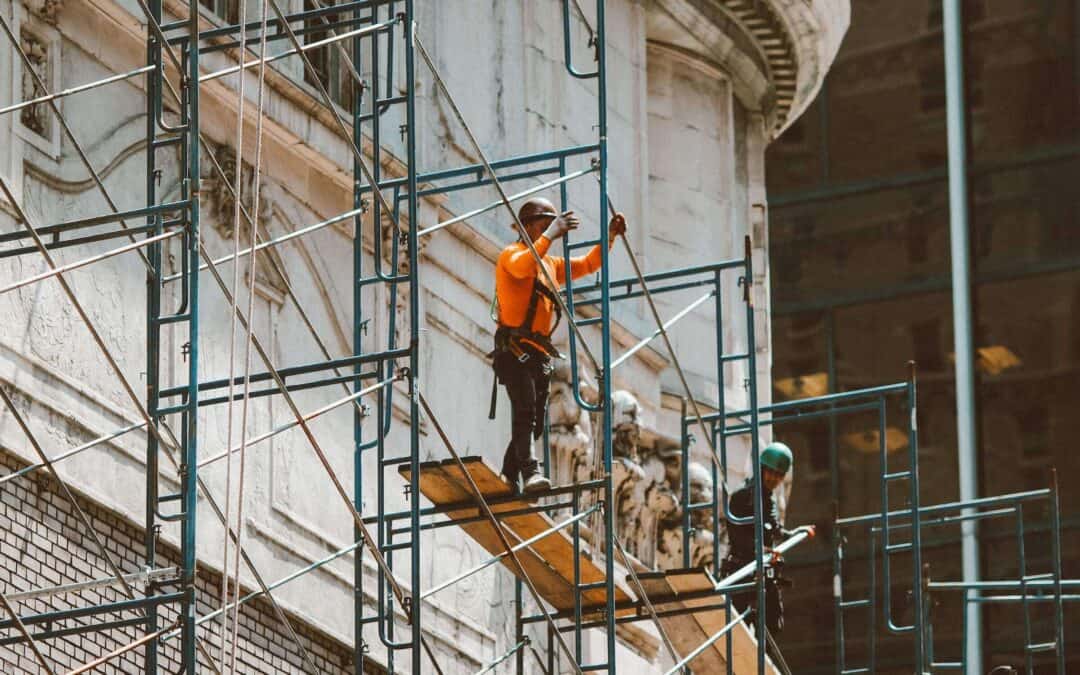The construction sites and working at heights remain a permanent high-risk work environment. Of the 183 work-related fatalities in 2019, 26 of them were in the construction industry. While new rules and regulations surface for employers to combat these figures, the onus is also on employees to ensure their own safety. Here are five scaffolding safety tips for practicing when on-site.
Personal Protective Equipment (PPE)
The bare minimum but often overlooked by some. Personal protective equipment (PPE) is vital in preventing workplace accidents but also minimising the outcome of those that do occur.
High-vis vests make workers easy to spot for heavy machine operators and in conditions with impaired visibility. Helmets protect the wearer from falling heavy objects and potentially save their life. Steel-capped boots protect workers’ feet from being crushed. Wearing minimal PPE is neither smart nor safe.
Maybe the helmet is uncomfortable, or the high-vis vest is over the other side of the compound, but using these is better than the alternative.
Scaffold Load Capacity
When selecting the scaffolding for your site, it is important to consider the weight that will be on the scaffold and choose a design with an appropriate load limit. Failing to include the load limit in your choice already sets up a serious risk for the employees who will be working on it.
Different scaffold systems have varying capacities. Frame scaffolding can hold 675kg and is recommended for bricklaying, while a standard aluminium tower can hold 225kg.
Choosing the wrong system means your scaffolding could be under increased pressure. This can result in structural components bending, which affects their structural integrity. A worst-case scenario is a scaffolding collapse.

Understand & Follow Regulations
An important consideration, especially on a large-scale commercial project. Site managers and professional scaffolders should know the latest standards for elevated systems. Following standards demonstrates their commitment to safety which protects employers from liability in the event that an accident does occur.
The correct procedure means installation and inspection before anyone sets foot on the scaffold. It also means follow-up inspections after 30 days, after adverse weather, or an accident.
Personnel must also use scaffolding tags during assembly to provide a paper trail of progress made. Furthermore, it will notify workers if the scaffold is ready for use or not, its capacity, and when it was last inspected.
Scaffolders should also be using components that have passed certification. When sourcing from a new supplier, requesting documentation for testing will quickly alleviate any concerns about the scaffold itself. If the manufacturer doesn’t want to send it or stalls, it means you should not trust that their product is safe.
Employ a Licensed Scaffolder
Australian regulation states that only workstations with a fall height of four metres or more require a licensed scaffolder to assemble. Towers under four metres, such as the smaller aluminium mobile scaffolds can be assembled without a license as a result.
While perfectly fine, we do not recommend installing a scaffold yourself without prior experience or in the presence of a licenced scaffolder. A scaffolder will be safer, faster, and will ensure the system is set up correctly.
Utilise The Scaffold Correctly
A scaffold will only be safe for those who want it to be. What we mean is that you cannot expect a scaffold to keep you safe if you do not exercise proper care around it.
There are certain do’s and don’ts to remember when working on any elevated platform. The first is to not use the scaffold itself as a ladder. A tip mainly for aluminium mobile towers, users should not climb the structure using the ladder frames but rather an actual ladder. The weight of a person can easily cause a tower to topple, especially if there are no outriggers.
Utilising a scaffold correctly also involves following the manufacturer’s manual. They know the equipment and its capabilities better than anyone and have conducted rigorous testing prior to selling their product. Do not attempt to gain extra height by placing a box or object on the platform to step on. It only increases the risk of a fall, and in this instance, the result will be more severe.
Following these five simple tips will ensure your worksite is safe and will save lives.

Recent Comments